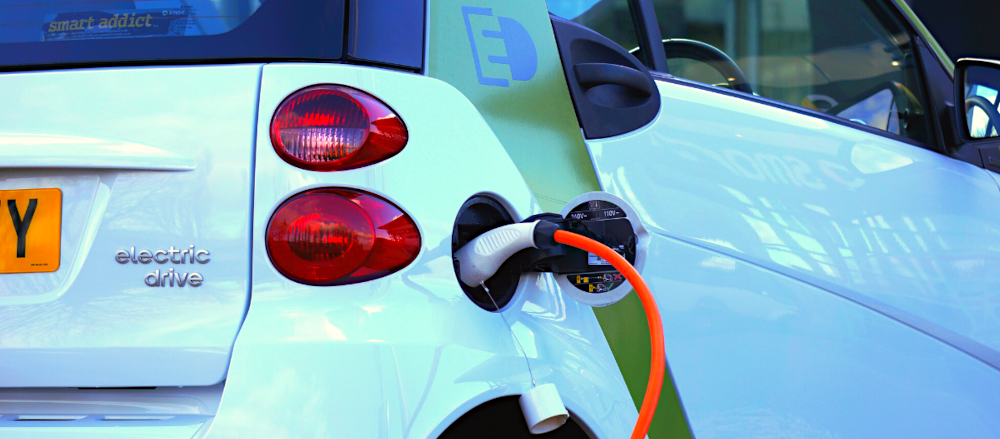
This Is What Could Slam the Brakes on EV Growth
According to the International Energy Agency (IEA), sales of electric cars hit a record 2.1 million globally in 2019, increasing the total EVs sold to 7.2 million electric cars. Electric cars, which accounted for 2.6% of global car sales and about 1% of global car stock in 2019, registered a 40% year-on-year increase. And this growth is only projected to continue. BCG’s (Boston Consulting Group) latest global automotive powertrain forecast shows sales of electrified vehicles growing even faster than expected. EV cars are now projected to be one-third of the global car market by 2025 and 51% by 2030, surpassing sales of vehicles powered purely by internal combustion engines (ICEs). If accurate, such growth would result in some 35 million EVs being sold worldwide in 2025 and over 55 million in 2030.
But will the raw materials that makeup EV batteries be a limiting factor on projected growth of the market? The estimated material demand for the batteries of the electric vehicles sold in 2019 was about 19 kilotons (kt) for cobalt, 17 kt for lithium, 22 kt for manganese, and 65 kt for nickel, according to the IEA. In the IEA Sustainable Development Scenario, which incorporates the targets of the EV30@30 Campaign3 to collectively reach a 30% market share for electric vehicles in all modes except two-wheelers by 2030, annual demand for the key materials would be 360 kt of cobalt, 370 kts of lithium, 354 kt of manganese, and 1,850 kts of nickel. Obviously, the demand for the materials used in electric vehicle batteries will depend on changing battery chemistries, nickel cobalt aluminum oxide (NCA), nickel manganese cobalt oxide (NMC), and lithium iron phosphate (LFP) cathodes for lithium-ion (Li-ion) batteries being the most widely used today.
For the next decade, the Li-ion battery is likely to dominate the electric vehicle market, according to the IEA. For the period after 2030, however, a number of potential technologies might be able to push the boundaries beyond the performance limits imposed by current Li-ion battery technology. These include the lithium-metal solid-state battery, lithium-sulfur, sodium-ion, or even lithium-air, which could represent an improvement from Li-ion on indicators such as cost, density, cycle life, and benefits from more widely available materials than Li-ion technologies.
EV batteries use a whole host of materials. Gold and silver are used in the circuit boards, but in minute quantities, and both gold and silver are fully recyclable. Many other parts, such as nickel, steel, plastics, carbon fiber, etc., are also used in ICE vehicles, and as the production of ICEs decline these materials can be switched over to EVs.
The two key materials then become cobalt and lithium. Thankfully, both are not rare. Lithium is the 32nd most common element on the planet, while cobalt can be found in most rocks and is typically a by-product of nickel and copper mining. Cobalt is expensive, with the cost subject to significant fluctuations. The adoption of batteries that use lithium-iron could eliminate a significant need for cobalt, however.
Although not particularly rare, both cobalt and lithium reserves are concentrated in a few countries, according to the Clean Energy Manufacturing Analysis Center (CEMAC). For example, about one-half of the global mined cobalt production comes from the Democratic Republic of Congo, which has a past of political instability. Some 80% of lithium production comes from Australia, Chile, and Argentina. The significant expected demand increase for these materials though could require $30-$45 billion of investment in mining capacity by 2025 to meet the demand. The often long-lead time to develop new mining sources could require such investment sooner rather than later to ensure ample supply of these key materials in the future.
A potential larger issue is more political. CEMAC notes that in addition to controlling major resources in natural graphite and manganese, China controlled nearly one-half global cobalt refining and a similar level of lithium carbonate refinery capacity. Such concentrated control of refining capacity could be a limiting factor in EV growth if political conditions deteriorate between China and other countries. Alternatively, other countries would need to invest in developing and expanding their own refinery capacity.
To end on a positive note, both cobalt and lithium are recyclable. So once a certain level of electric vehicles are on the road, recycling of existing batteries should lessen any of the potential limiting factors.
Sources:
https://www.ucsusa.org/resources/comparing-electric-vehicles
https://new.engineering.com/story/what-you-need-to-know-about-batteries-for-electric-vehicles
https://www.nrel.gov/docs/fy19osti/73374.pdf
https://www.bcg.com/en-us/publications/2020/drive-electric-cars-to-the-tipping-point
Enjoy Premium Channelchek Content at No Cost
Suggested readings:
U.S. Rare Earth Mining gets Boost from Government